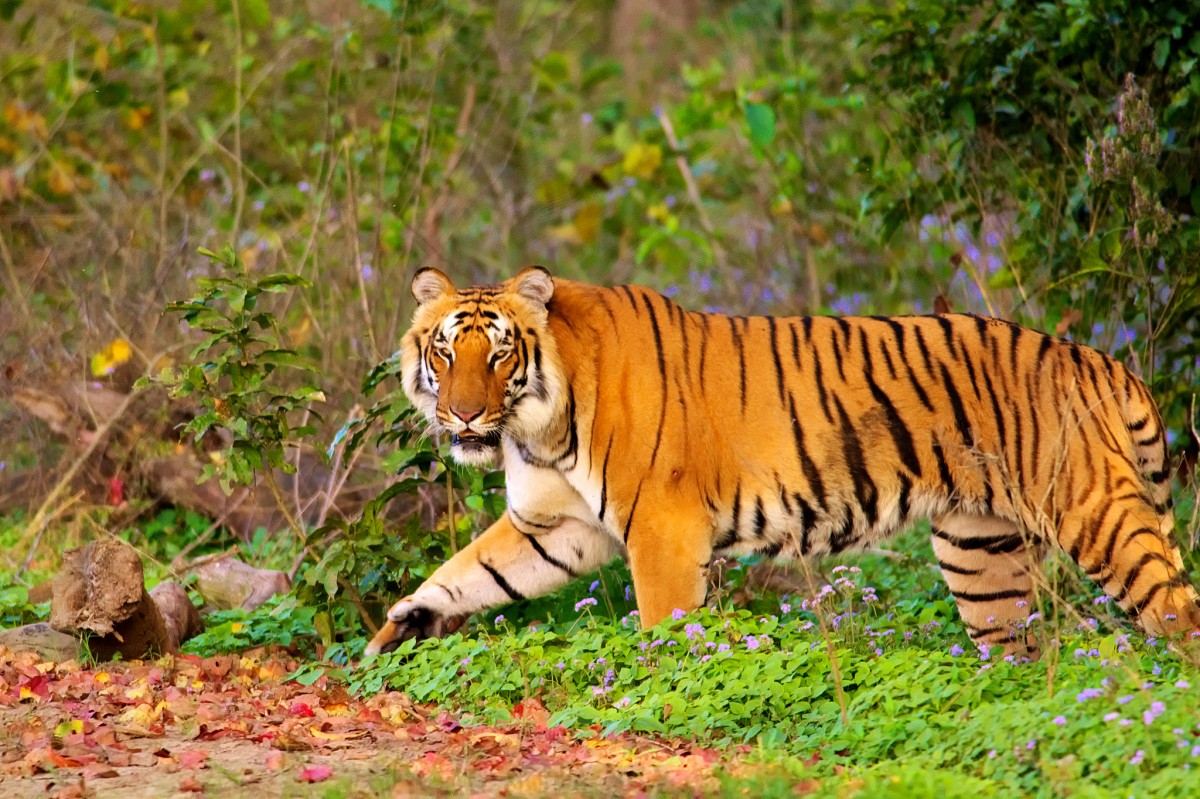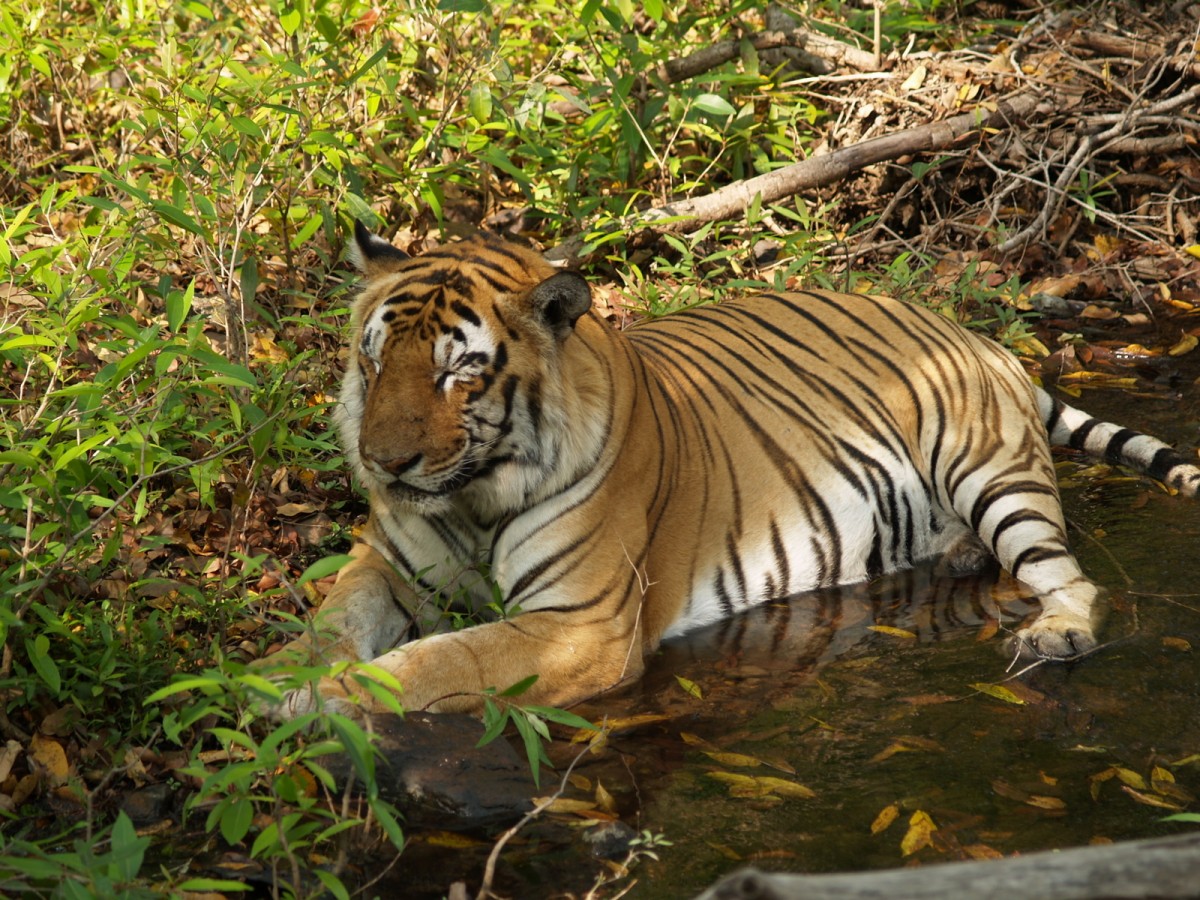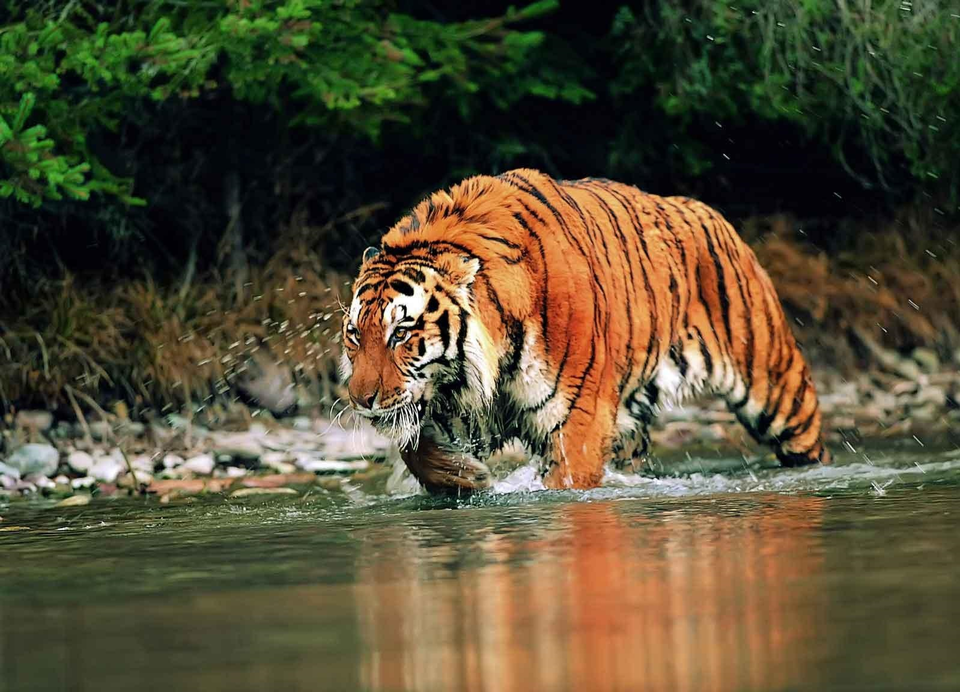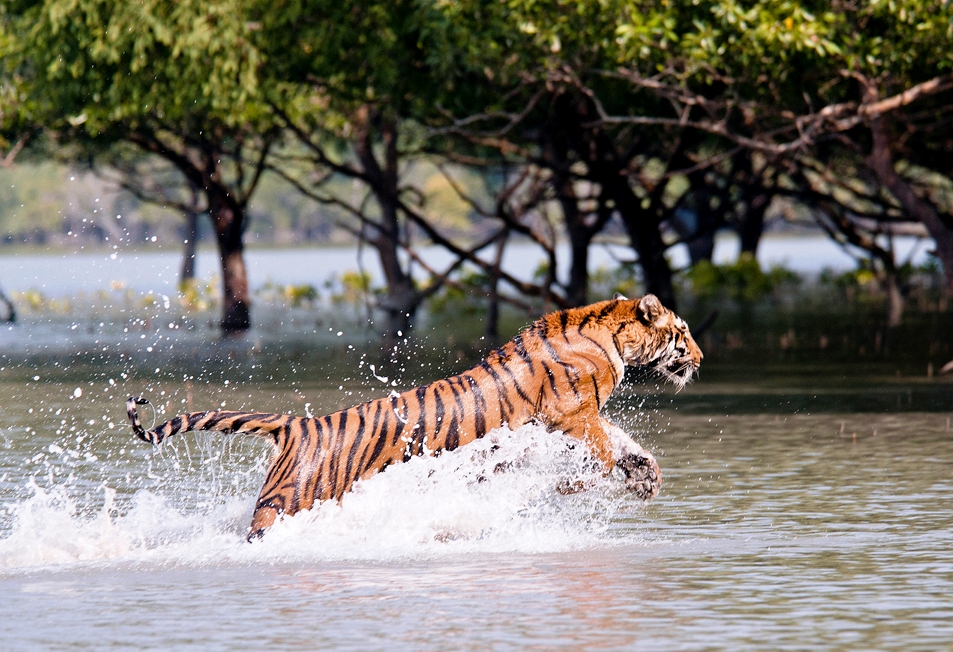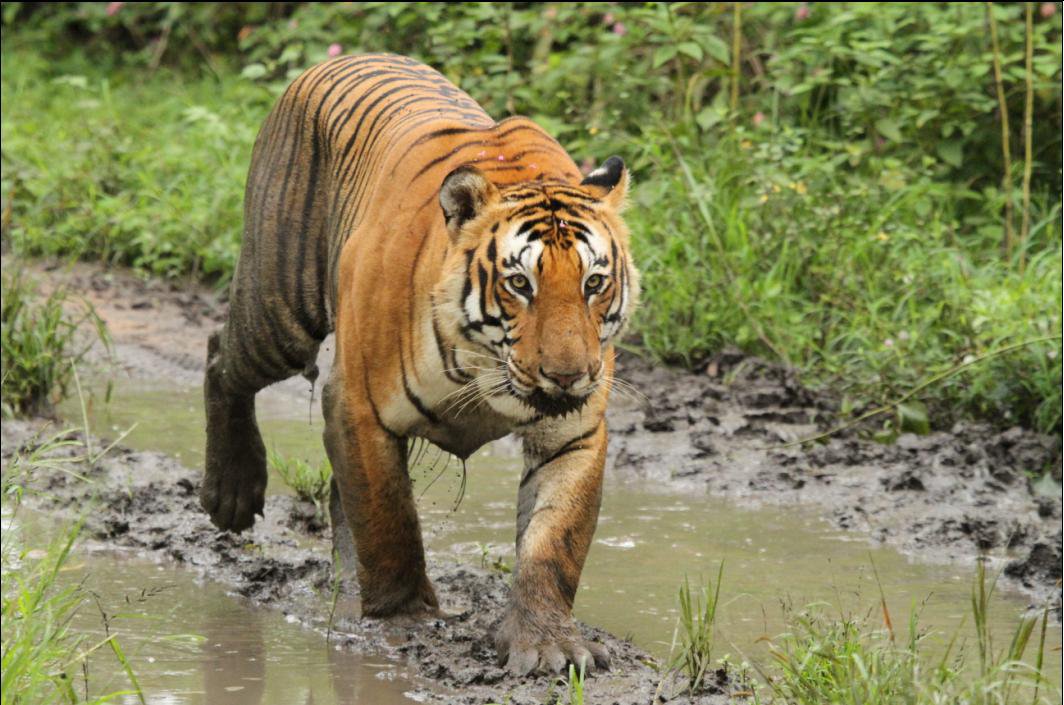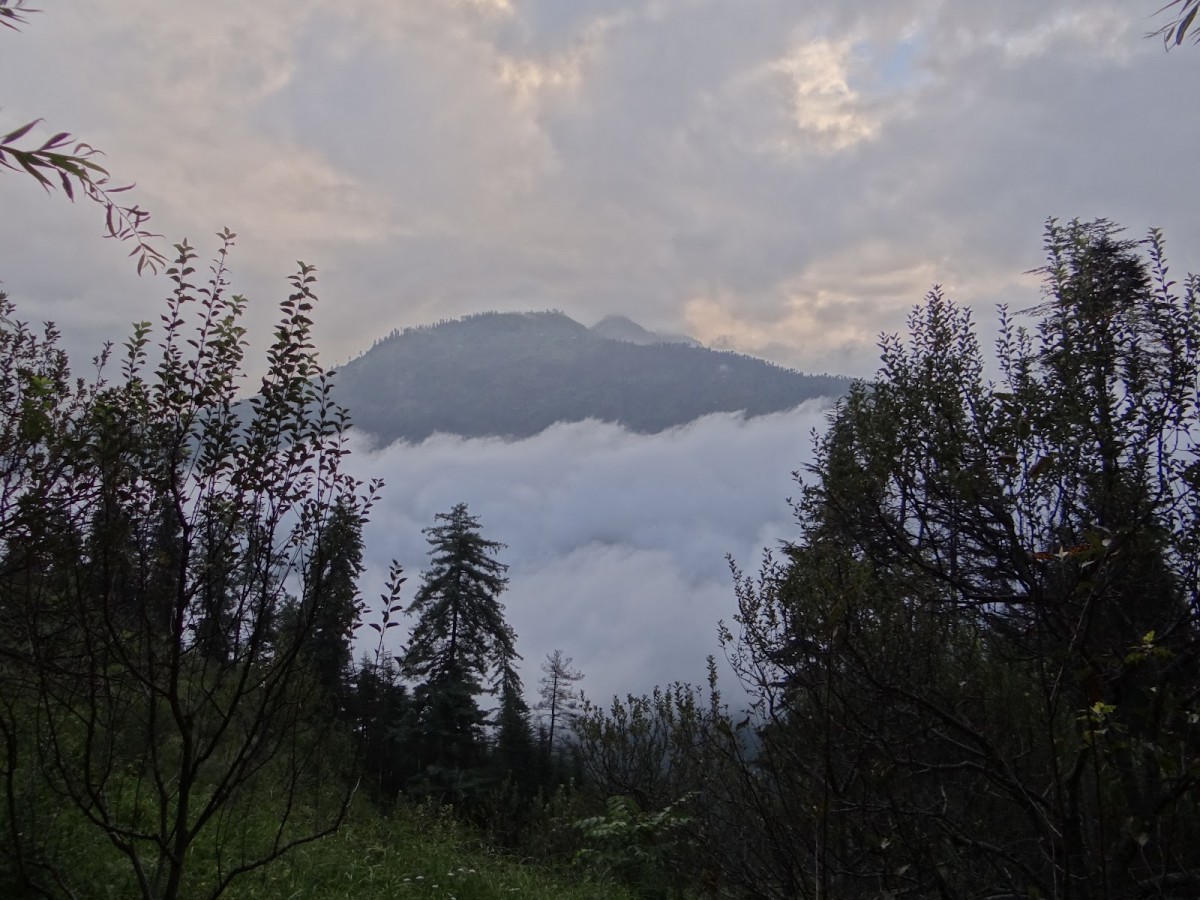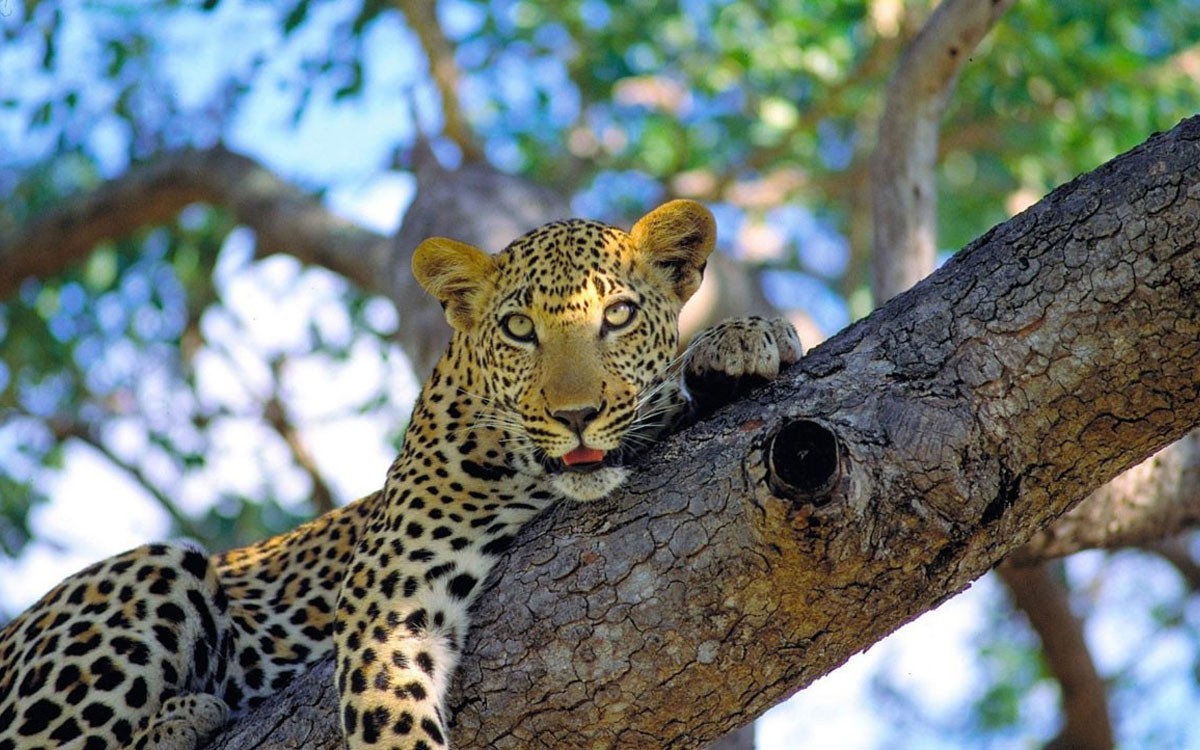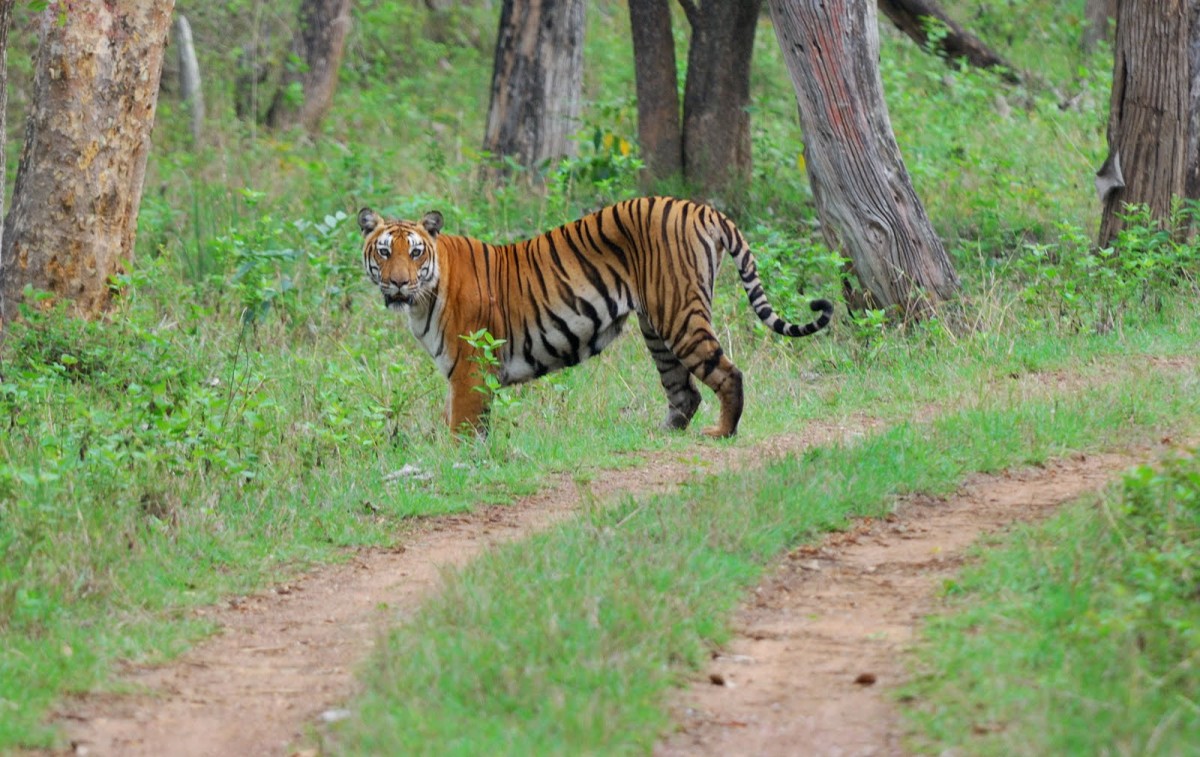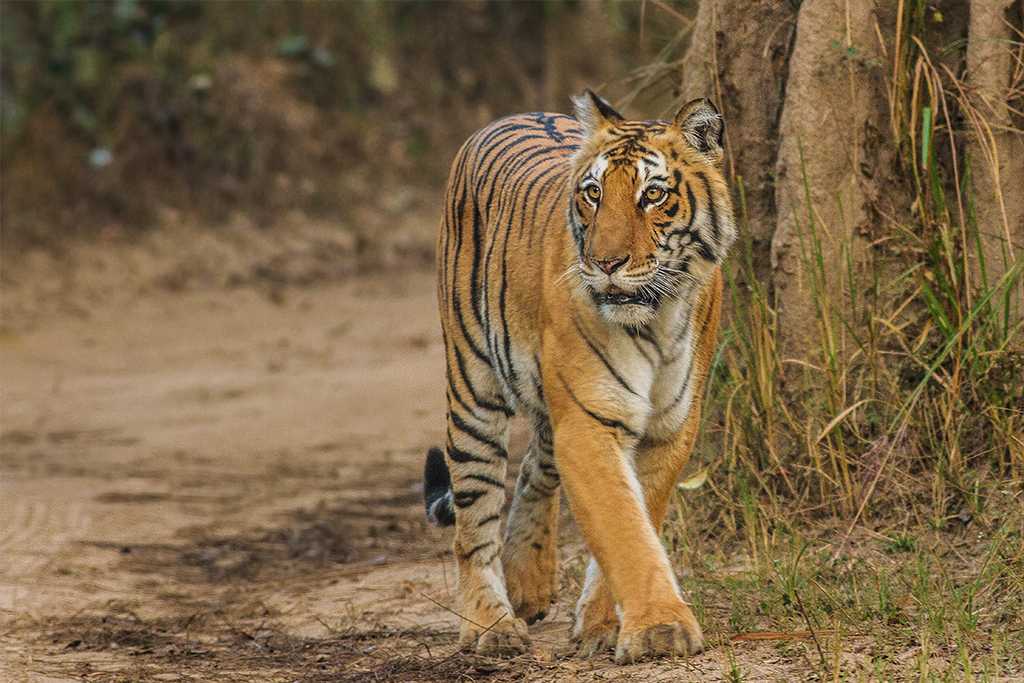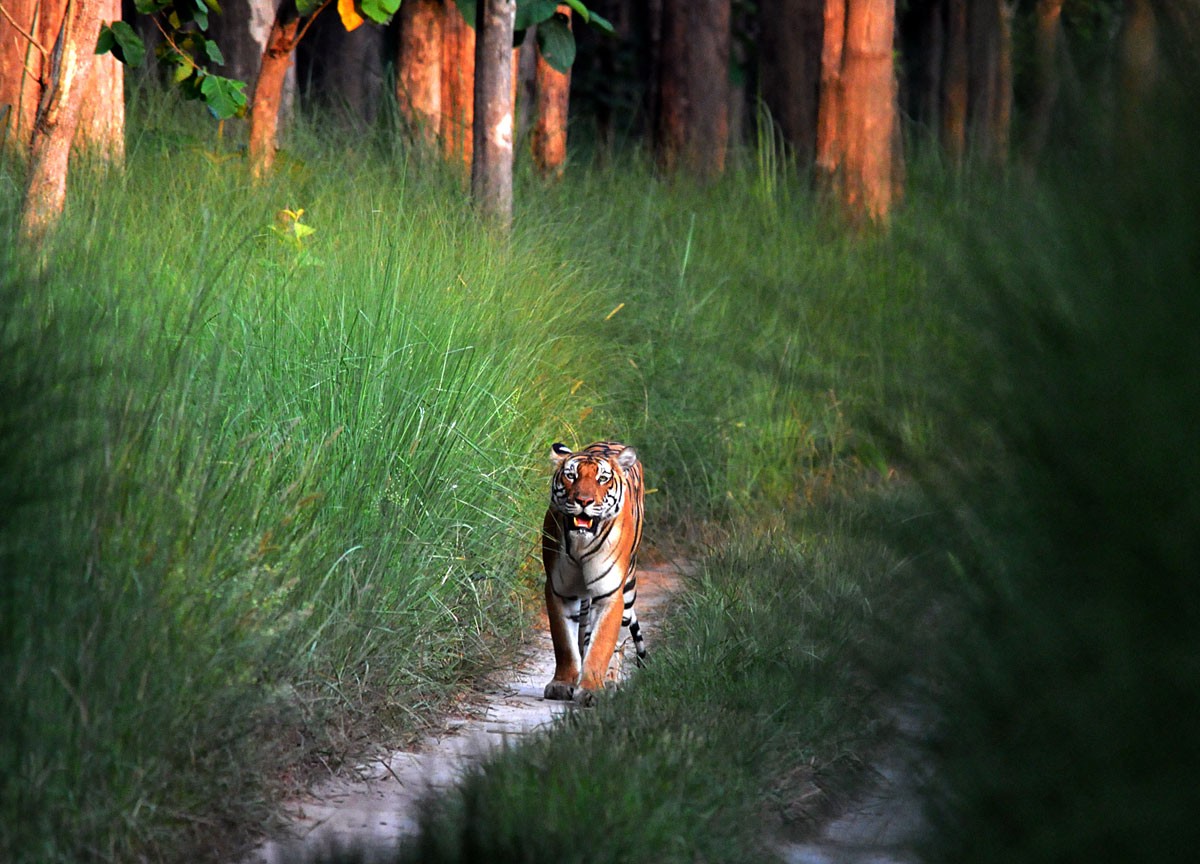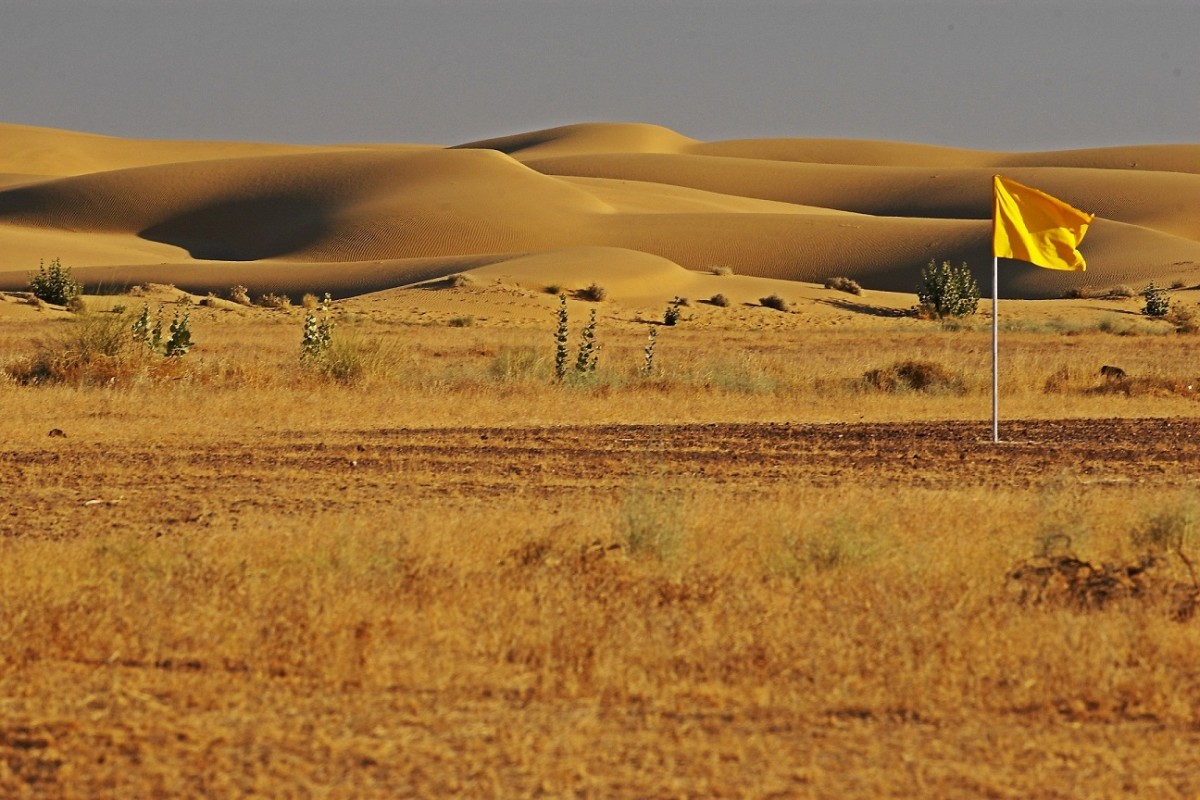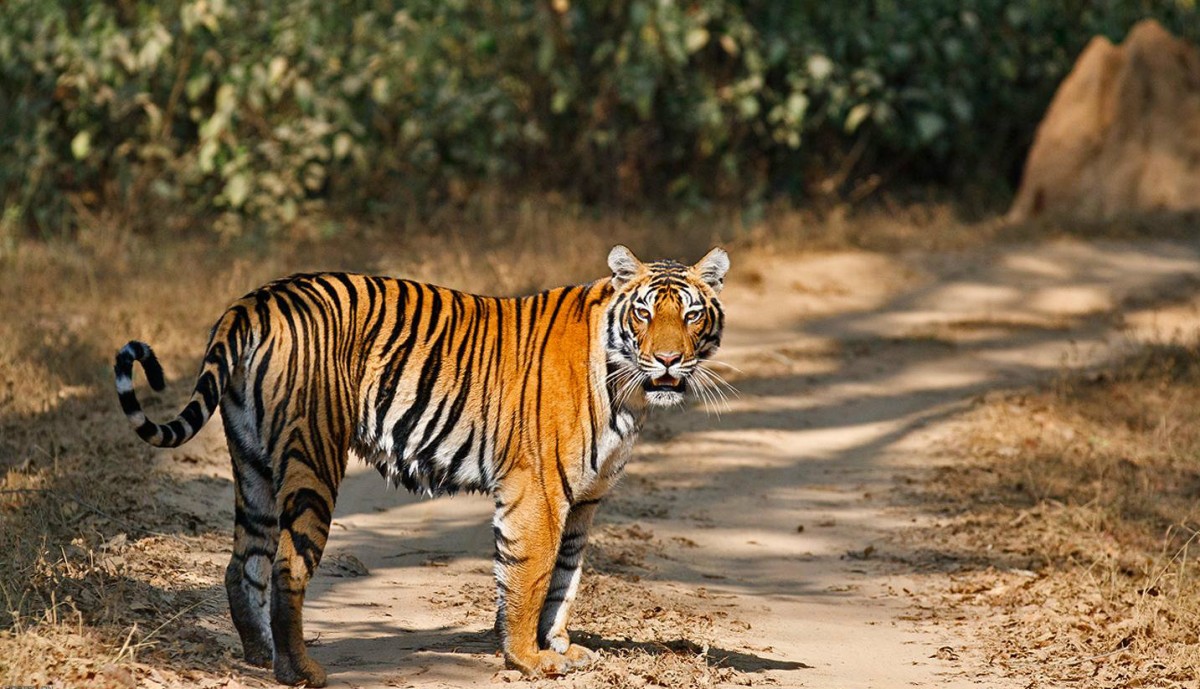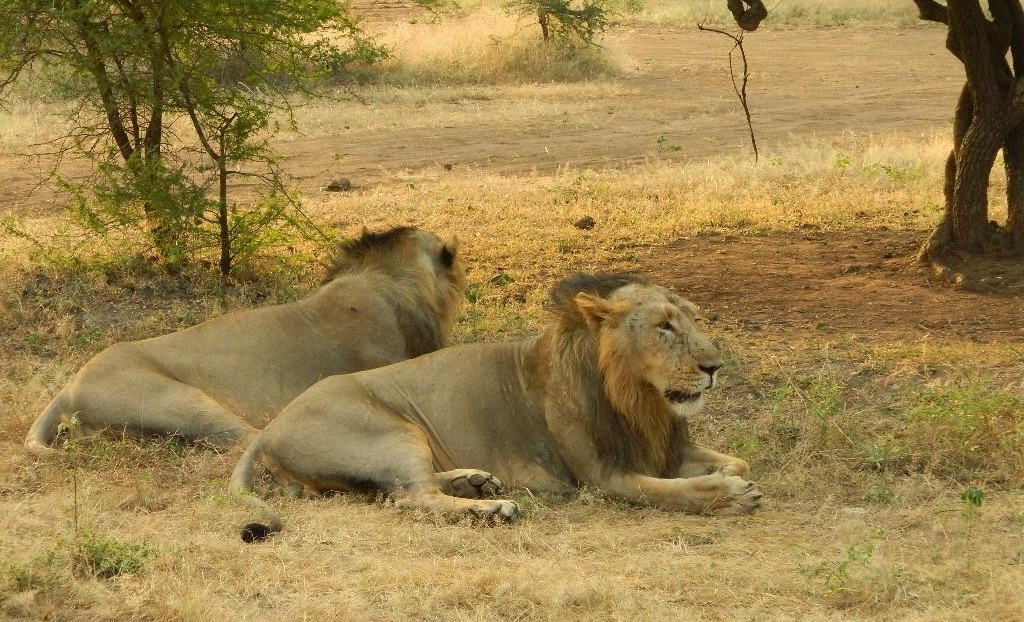
Gir National Park
Park At A Glance
| IUCN Category | II (National Park) and IV (Managed Nature Reserve) |
| State | Gujarat. |
| District | Junagarh. |
| Area | 259 Sq. Km. |
| Established On | May 21, 1975 |
| Special Status | Asiatic Loin Sanctuary |
| Specialty | Asiatic Loins and Leopards |
| Period for Visit | December to March (Closed from June to October). |
| Nearest Town | Veraval (42 km). |
| Nearest Railway Station | Sasan (01 Km). |
| Nearest Airport | Keshod (86 Km). |
Gir is the home of the Maldharis, a term used for the many Hindu and Muslim pastoral groups of the area. The Maldhars live in traditional settlements called nesses and tend Jafrabadi buffalos, Gir cows and other livestock. Some of them also have camels, sheep and goats. Among the best-known pastoral groups of Gir is the Sorathi Rabari. Siddis are a community with African origins. Believed to have come from African countries as mercenaries, slaves and labour, the Siddis grew to become powerful generals, some of them even became rulers. In Gir, there are villages of the Siddis, who are well known for their dances and other performances, and a major shrine for the community.
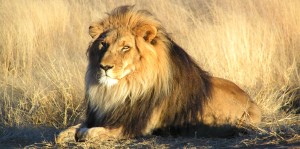
Fauna of Gir National Park
According to official census figures, Gir has about 300 lions and 300 leopards, making it one of the major big-cat concentrations in India. Sambar and spotted deer (chital), blue bull (nilgai), chousingha (the world’s only four-horned antelope), chinkara (Indian gazelle) and wild boar thrive in Gir. Jackal, striped hyena, jungle cat, rusty-spotted cat, langur, porcupine, black-naped Indian hare are among the other mammals of Gir.
Gir has a large population of marsh crocodile or mugger, which is among the 40 species of reptiles and amphibians recorded in the sanctuary.
The park checklist has 250 birds and about 50 other species (including the endangered lesser florican and the saras crane) are recorded in the grasslands along the perifery of the sanctuary. Many species like the painted sandgrouse, grey francolin, quails, Asian paradise flycatcher, black-naped monarch, white-browed fantail, Asian brown flycatcher, grey-headed flycatcher, verditer flycatcher, tickell’s blue flycatcher, greenish warbler, white-eye, coppersmith barbet, common and marshal’s iora, rufous treepie, yellow-footed green pigeon have been spotted by our guests around the lodge itself. Long-billed vulture, Indian white-backed vulture, red-headed (king) vulture, Eurasian griffon vulture, changeable hawk-eagle, crested serpent eagle, bonneli’s eagle, greater spotted eagle, lesser spotted eagle, tawny eagle, steppe eagle, imperial eagle, Pallas’s fish eagle, grey-headed fish eagle, osprey, peregrine falcon, laggar falcon, red-headed falcon, oriental honey-buzzard, white-eyed buzzard and other raptors have been seen in the sanctuary. Gir also has brown fish owl, Eurasian eagle owl, spotted owlet. In the evening, nightjars can be seen near the lodge gate. Wetlands like Kamleshwar Dam are good for waterfowl, with Indian skimmer, spot-billed and dalmatian pelicans, etc possible.
PLACES OF INTEREST NEAR GIR
Veraval (36 km): The fishing port of Veraval is known for its dhow-building yard where massive hand-built seaworthy vessels are made. Once a port of the Nawab of Junagadh, it has old gates and historic buildings.
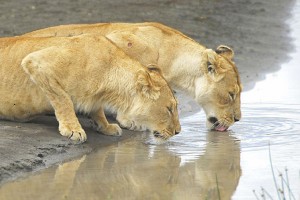
Somnath (40 km): Somnath is one of the 12 jyotirlingas or holy abodes of Lord Shiva. The main temple is an important pilgrimage for Hindus and its riches were ransacked by invaders. The Prabhas Patan Museum has interesting architectural fragments and sculptures from the ruined temples. Somnath also has Lord Krishna’s cenotaph and bathing ghats at Triveni Tirth, a medieval Sun Temple , the historic Ahilya Temple , Bakhla Tirth where Krishna is said to have met his end, and a cave temple.
It also has beaches and there are chances of seeing coastal birds like dunlin, curlew sandpiper, black-headed, brown-headed, Pallas, yellow-legged and heuglin’s gulls, gull-billed, Caspian, lesser crested, common, little, whiskered and river tern, ruff, ruddy turnstone, whimbrel, curlew, red-necked phalarope, etc.
Junagadh (63 km): Historically, Junagadh is one of the most interesting cities of Gujarat. Emperor Ashoka’s rock edicts here date to the 3rd century BC and there are also ancient Buddhist cave-sites dated to the Mauryan and Gupta Fort. The Uparkot Fort of the Chudasama Rajputs rises from a hilltop and has 11th century monuments inside the imposing battlements. Mystic poet Narsinh Mehta also lived in Junagadh and his monument is in the city. By the 19th century, the Nawabs of Junagadh rose to become affluent rulers and during their reign palaces, colleges, mosques, mausoleum complexes and a quaint railway station came up at Junagadh, all of which are worth seeing specially the palace museum. The city museum has archaeological finds and manuscripts.
While in Junagadh, visit Sakkarbagh Zoological Park that is captive-breeding Asiatic lions and you could see ibises and other birds in the park.
Girnar (60 km): This 3660-ft high hill rises on the outskirts of Junagadh with temples on ridges and on the summit. The 12th century Jain Temples are specially attractive with exquisite carvings.
Jetpur (90 km): The textile town of Jetpur is known for its block and screen printing workshops and is good for shopping.
Diu Island (95 km): Diu Island was once ruled by the Portuguese and is now a Union Territory. Popular as a beach destination, the island also has a 16th century Portuguese Fort, the impressive St Paul’s Church, Diu Museum and old houses. Flamingos, storks and waders can be seen at the creeks of Diu.
Gondal (123 km): A princely state known for its progressive rulers, Gondal is a good place to stay in the luxurious comfort of palatial rooms at a heritage hotel. Other highlights of Gondal are the Vintage and Classic Car Collection of the Maharaja, the Maharaja’s Royal Rail Saloons, the Bhuvaneshwari Ayurvedic Pharmacy, Gaushala and Ashwapalak (breeding centre for Gir cattle and Kathiawadi horses) and the Swaminarayan Temple.
For birders, Gondal is interesting as it has large water bodies where white pelican, demmossile and common crane, black-headed, black and glossy ibises, comb duck, spotbilled duck, spoonbill and other birds gather in large numbers. The royal family’s grasslands are good for prinias, larks, quails, francolins and other birds. Lesser florican in most years breeds at these grasslands in August and harriers visit in winter. Ibises and waders breed in Gondal.
Jamnagar (151 km): The princely city of Jamnagar is dominated by its many palaces. Known for its tie-and-dye (bandhini) fabrics and its temples, Jamnagar also has a bird-rich lake where more than 75 species of birds have been listed.
Jamnagar is also the headquarters of the Gulf of Kutch Marine National Park and Wildlife Reserve, which protects 42 islands fringed by coral reefs and mangroves. These islands and coastal areas are excellent for birding attracting large wintering flocks of crab-plover, Kentish plover, ruddy turnstone, whimbrel, curlew, terek and curlew sandpiper, Temnminck’s stint and other waders. Many birds breed along the Gulf of Kutch and at the islands including herons, darters, cormorants and terns. During low tide, the coral reefs can be explored to see octopus, sea hare and other mollusk, echinoderms like starfish, brittle star and sea urchin, sea cucumber, sea slug, many species of crabs and other crustaceans, segmented and unsegmented worms (including endemics), sea anemone, sea fans and other marine life.
Khijadiya Bird Sanctuary near Jamnagar is also a good birding site. Indian skimmer is often seen in winter and the first breeding site of great-crested grebe south of the Himalaya was recorded here. Black-necked stork, glossy ibis and other birds breed at Khijadiya and large flocks of ducks can be seen in winter.
The salt-works near Jamnagar are good for greater and lesser flamingo, great white pelican and painted stork. Jamnagar is also the base to visit Ranjitsagar, Sasoi Dam, Sinhan Dam and Khambaliya Dam, all four reservoirs are good for birding.
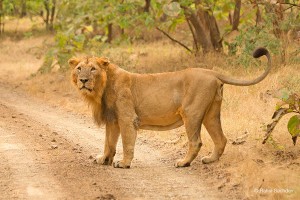
Rajkot (164 km): The bustling city of Rajkot has the Watson Museum, Gandhiji’s childhood home, Rashtriya Shala working to revive rare weaves and handicrafts, and public schools. The lakes around the city are good for waterfowl.
Porbandar (187 km): The birthplace of Mahatma Gandhi, Porbandar was the capital of an important princely state and has many historic buildings.
The creeks of Porbandar attract large flocks of flamingos, waders and wagtails. Spectacular flocks of wintering cranes can be seen at dams and wetlands near Porbandar. Porbandar also has a lake that has been officially notified a bird sanctuary. It is an excellent area for gulls and terns and one of the best places in Gujarat for great crested tern in winter.
Off the Sasan – Porbandar Road is the Barda Wildlife Sanctuary which is also good for birding and for reptiles.
Dwarka (225 km): One of the Char-dham yatras (four holy abodes) and one of the seven holiest cities of Hinduism, Dwarka has an important Krishna Temple, an attractive 12th-13th century Rukmani Temple, Sankracharya’s Math and the Nageshwar Jyotirlinga.
Located on the coast, Dwarka is also good for birding and green sea turtles are possible sightings on the beaches. Dolphins can be seen at Okha nearby especially during the ferry crossing to Bet Dwarka.

